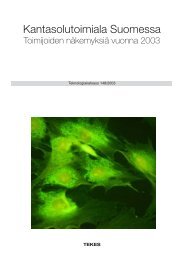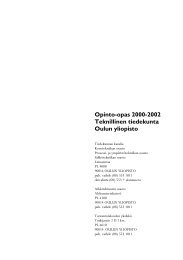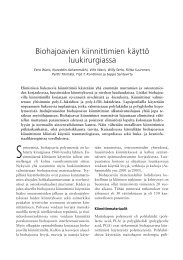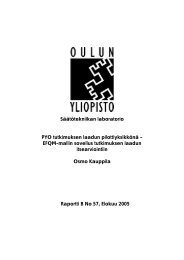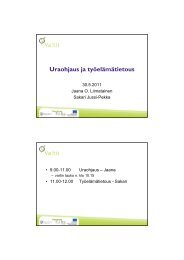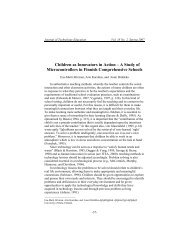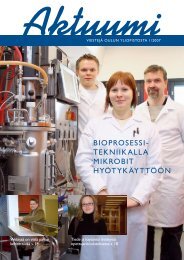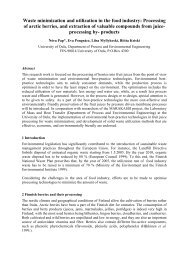Meeting programme - Oulu
Meeting programme - Oulu
Meeting programme - Oulu
You also want an ePaper? Increase the reach of your titles
YUMPU automatically turns print PDFs into web optimized ePapers that Google loves.
Silicate melt – fluid miscibility upon cooling in the Earth’s crust: the<br />
transition from granite to pegmatite.<br />
Maarten Aerts 1,2 , Alistair C. Hack 2 , Peter Ulmer 2 and Alan B. Thompson 2<br />
1 Natural History Museum, Geology, University of Oslo, Norway<br />
2 Institute for Mineralogy and Petrology, ETH Zürich, Switzerland<br />
Silicate-bearing aqueous fluids are important mass transfer agents in the Earth’s<br />
interior. In-situ observations of high-pressure, high-temperature fluid-rock<br />
interactions revealed how increasing solute contents can drive such aqueous fluids to<br />
melt-like behaviour at great depths in the Earth. For granitic systems, a continuous<br />
transition from hydrous magma to low-temperature hydrothermal solution has been<br />
postulated, but has not been reconciled by available data. Here we show experimental<br />
evidence for the stable coexistence of fully miscible peralkaline solutions with a<br />
model-granite at upper-crustal depths and temperatures down to 350°C. In strong<br />
contrast to subduction-zone environments, complete miscibility in a granite-H2O<br />
system was found to occur during cooling as opposed to heating. Such lowtemperature<br />
fluids and their phase relations are dramatically different from those of<br />
mantle and subduction zone fluids, and suggest that vastly enhanced mass transport<br />
related to supercriticality occurs along completely different thermal pathways in the<br />
crust compared to mantle. The fluids we have identified tend to dissolve wall rocks<br />
during cooling and are likely most important at the cooling margins of large intrusive<br />
complexes and at the late dying stages of granite fractionation and pegmatite<br />
petrogenesis. These experimental results indicate that the occurrence of supercritical<br />
silicate-bearing fluids is not restricted to the deep Earth and provide a possible<br />
explanation for the frequently observed causal relation between aqueous vapor<br />
saturation of granitic melt and the formation of giant crystals in granitic pegmatites.



